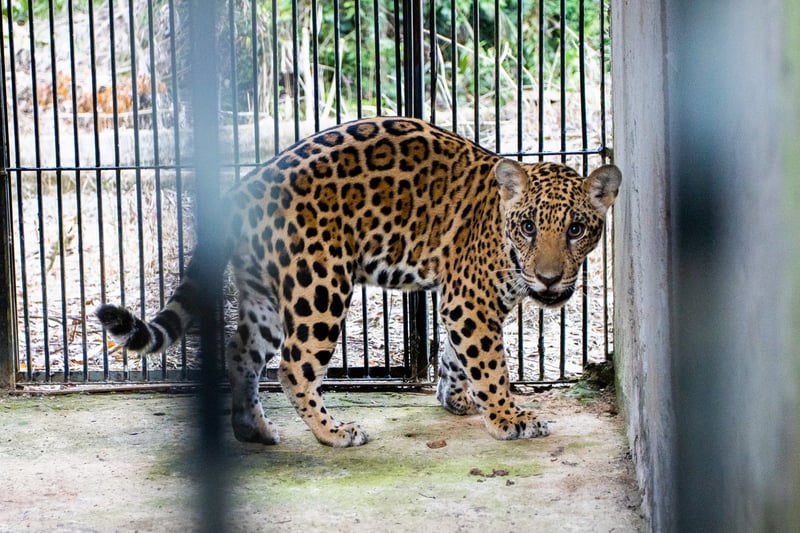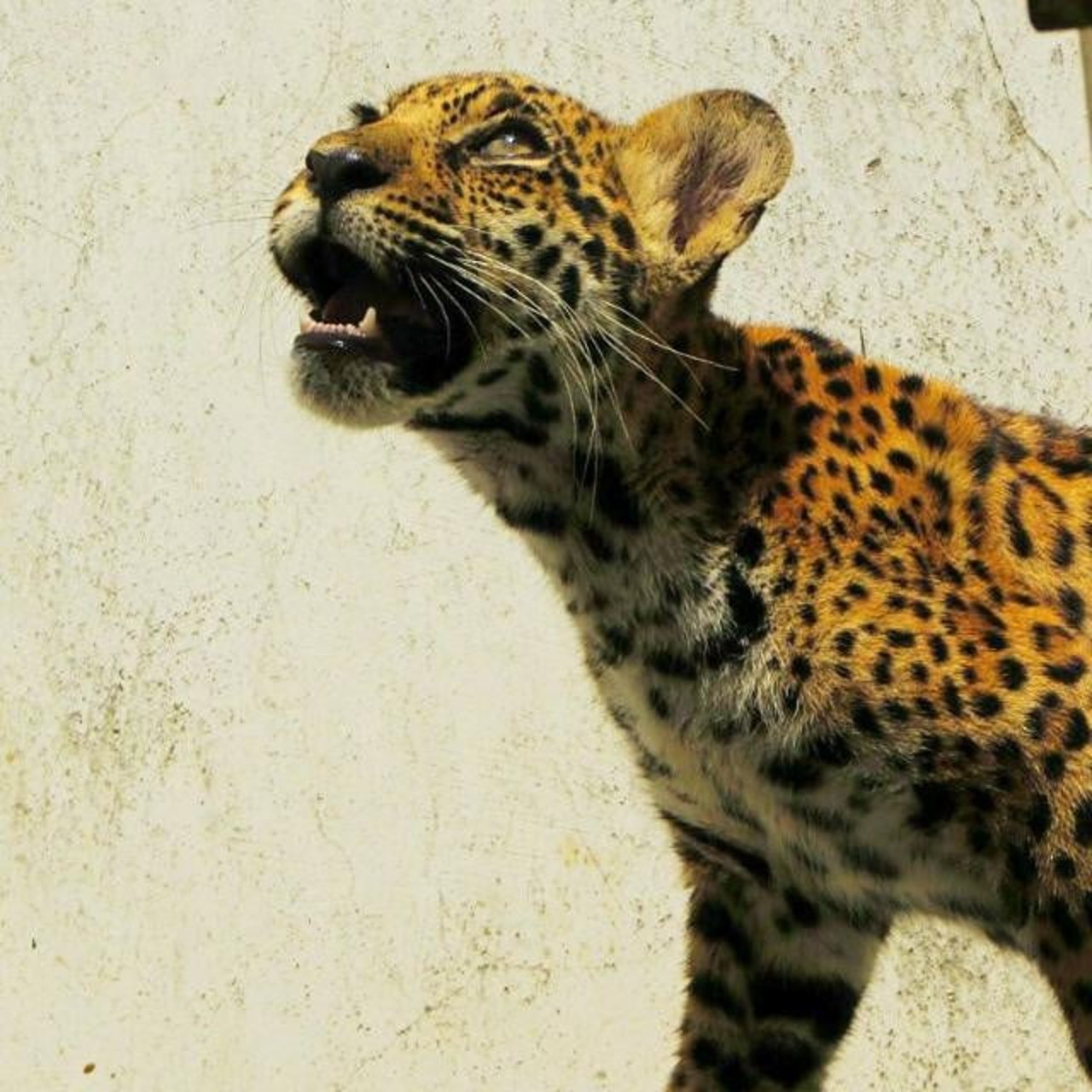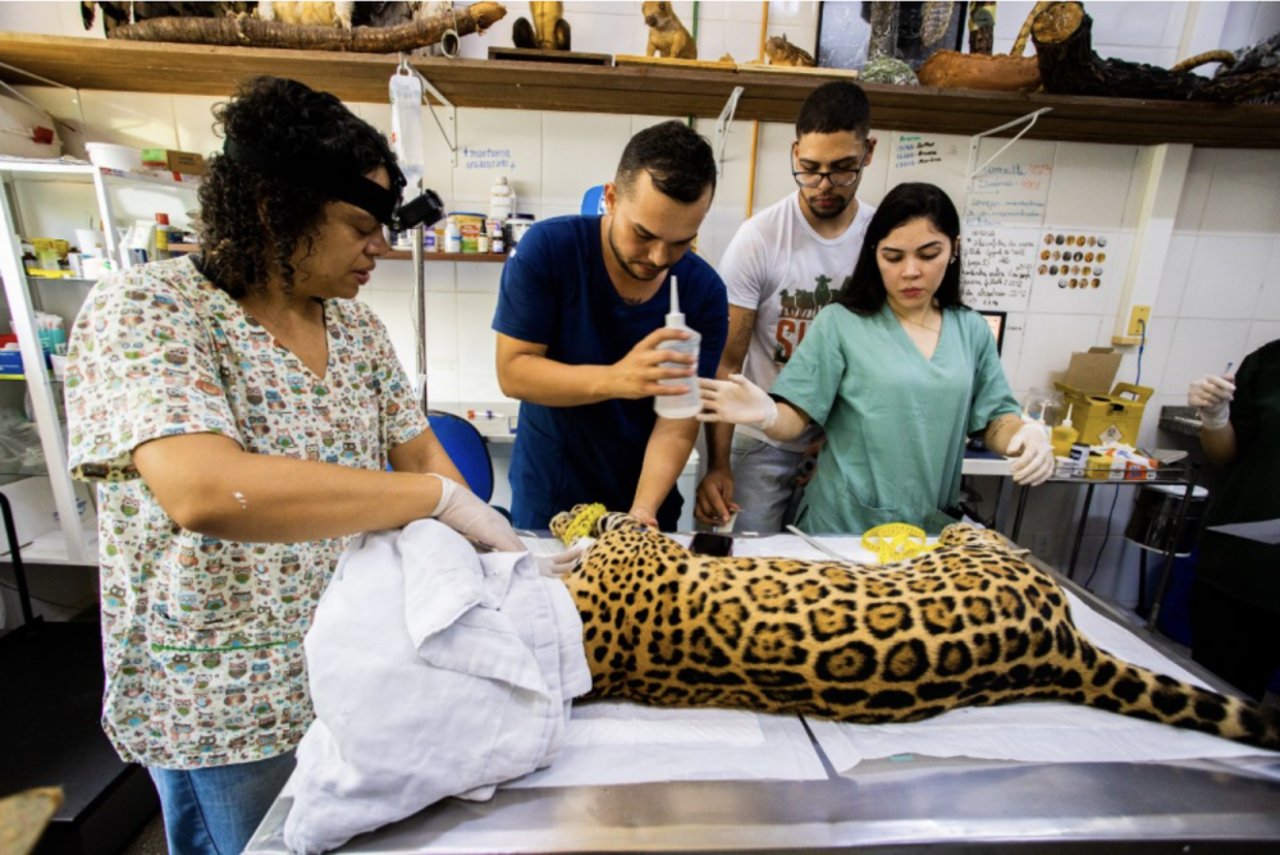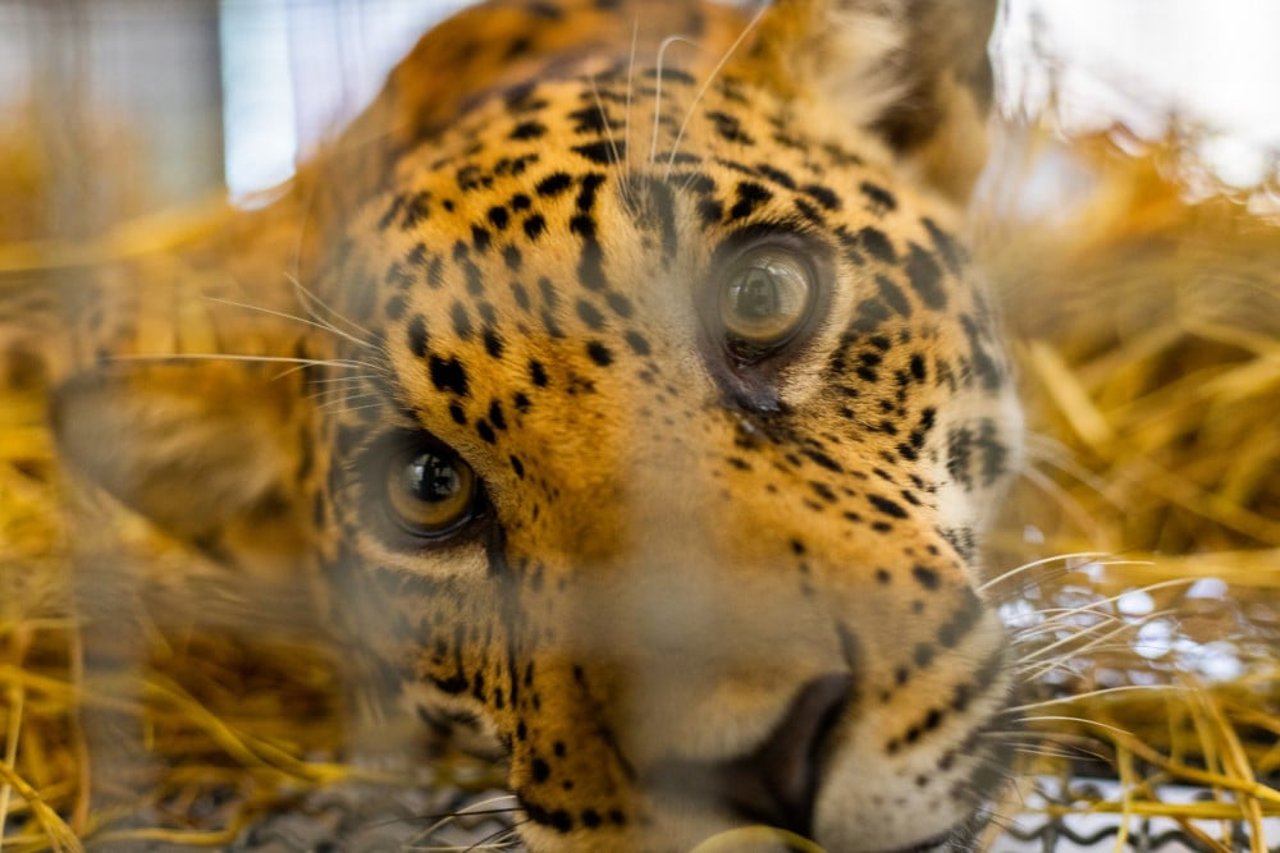
This month, our global wildlife team completed the mission to monitor, support, and document the 12-hour-long transfer of Xamã, an eight-month jaguar cub, from his veterinary hospital to a rehabilitation facility.
The steel metal bars reflected in the bright sunlight. A spotted paw hovered near its door. Humans peered down at the animal with searing intensity, eyes widening with curiosity. Xamã the jaguar peered back, confused and uncertain of what was yet to come.
Then, the door of the enclosure swung open. Freedom.
A collective breath was released. Xamã bounded forward into the Amazon forest. Much to the delight of the humans watching, he didn’t even turn around to look back.
We often say how cages inhibit freedom, trapping an innocent, feeling animal behind them. But the cage that Xamã left was the gateway to freedom for this rescued and rehabilitated jaguar who was the victim of devastating Amazon fires.
Making History
After five months in recovery at the Wild Animal Care Sector of the Veterinary Hospital of the Federal University of Mato Grosso, Xamã the young jaguar arrived on January 20 at the rehabilitation enclosure in Brazil’s state of Pará. He will remain there for up to two years and be supported in learning basic behaviors such as hunting and defense--skills he did not have the opportunity to receive from his mother. When Xamã reaches maturity and is ready for reintroduction into the wild, he will be released into a suitable and safe area to live a wild life again. Upon completing this process, Xamã will be the first male jaguar in Brazil to have been rescued and successfully reintroduced into the Amazon.
Xamã’s journey
Xamã was rescued in the Sinop region of Brazil in August 2022 when he was about two months old and just over 22 pounds. He had likely been separated from his mother when fleeing from a large forest fire that had occurred in the vicinity shortly before.
In the Sinop region, from May to October each year, there is an increase in forest fires--mainly caused by human activity. Wildlife is directly impacted by burns, dehydration, and asphyxiation by smoke. When the animals attempt to flee, disorientation usually leads to various traumas, such as collisions with buildings, being run over when crossing roads, or encounters with domestic animals. Wild animals also lose their nests, food, and water sources to the fire. They are further harmed by the destruction of large swaths of forest areas for soybean plantations and pastures.
Xamã was alone, scared, and in a state of malnutrition and dehydration when he was found on a private property near the Teles Pires River. The authorities were notified, and Xamã was secured on the same day. After receiving nutritional replacement and showing a consistent improvement in his body score, Xamã was gradually introduced to environmental enrichment elements to feel safe in the temporary enclosure. Over time, his care team followed a meticulous protocol and found that Xamã retained wild instincts such as skittish behavior toward humans. This is a vital aspect for reintroduction into the wild--avoiding imprinting (habituation or attachment to humans) is critical to ensuring success in returning to the wild.
Xamã’s care team.
Toward the end of the day, Xamã arrived at the rehabilitation facility. As soon as he was transferred from his transport box to the change room (a small temporary separation at the entrance to the main room), Xamã’s behavior made clear his desire to get away from people and get back into the woods. The team ruled out the need for pre-adaptation and opted for direct release into his new forest enclosure. With the door open, Xamã took off for the woods without looking back, to the joy and pride of everyone involved. As a blessing from Mother Nature, the light rain falling at that moment almost immediately turned into a thick Amazonian downpour. Welcome, Xamã!
Next steps
From now on, Xamã is being permanently assisted by a team of biologists to gain the basic behaviors of his species, such as hunting and defense. He will be encouraged to carry out what he would have learned from his mother until around 17 months of age. Xamã will have the entire enclosure of dense and rich native Amazonian forest exclusively for him. On a daily basis, contact with humans will be minimal, and cameras will monitor his movements. After an initial period of disappearance, the first record of Xamã in his enclosure was captured by a remote camera: he eats normally and has been actively exploring his new home!
When Xamã has reached maturity and achieved autonomy to live in the forest again, he will be released and receive a radio collar that will allow specialists to remotely monitor his movement, activity, and territory marking for at least one year. Throughout this process, Xamã will generate data that will indicate his adaptation and help in the future rehabilitation of other male jaguars.
Brazil is considered a key country for the conservation of jaguars as it contains the largest population of them in the world. Because the Amazon has the most extensive area of adequate and unfragmented habitat for jaguars, it is the most important territory for the long-term conservation of the species. Among other aspects, the presence of jaguars is strategic for environmental preservation because these animals are very sensitive to environmental disturbances and thus help monitor the quality of the habitat (a bioindicator species).
The process of rescuing, treating, and keeping Xamã so far has been the responsibility of the Hovet/Wild Animal Care Sector/UFMT, with the accompaniment of the Secretary of State for the Environment of Mato Grosso. The Brazilian Institute for the Environment and Renewable Resources and the Chico Mendes Institute for Biodiversity Conservation (ICMBio), through the National Center for Research and Conservation of Carnivorous Mammals, acted in technical supervision and administrative management as public authorities.
“What makes Xamã different from other jaguars that we receive and treat over time is the way in which these partnerships were established, at the time and in the manner in which this happened.
“The partners really made a difference by recognizing the importance of the animal, his condition, and the possibility of successful rehabilitation and release. In addition to financial support, which is fundamental, the presence, follow-up, and exchange of ideas brought security and support to the team. The great lesson of this whole process is that animal protection and environmental conservation cannot be done alone: it is something that is done hand in hand.” -- Elaine Dione Venêga da Conceição, professor from UFMT and responsible for Hovet’s Wild Animal Care Sector
World Animal Protection is a sponsor and consultant for the project, having monitored Xamã’s recovery phase locally in Sinop in collaboration with the Ecotono Institute (IEco). Onçafari, a Brazilian entity specializing in the reintroduction of felines, was involved in making the reintroduction possible and will take over from now on as a partner in the management of Xamã until his release and subsequent remote monitoring in nature.
You can help support the recovery and protection of animals like Xamã by joining the Wild Side. With your help, we can ensure that all wild animals maintain their right to live a wild life.


